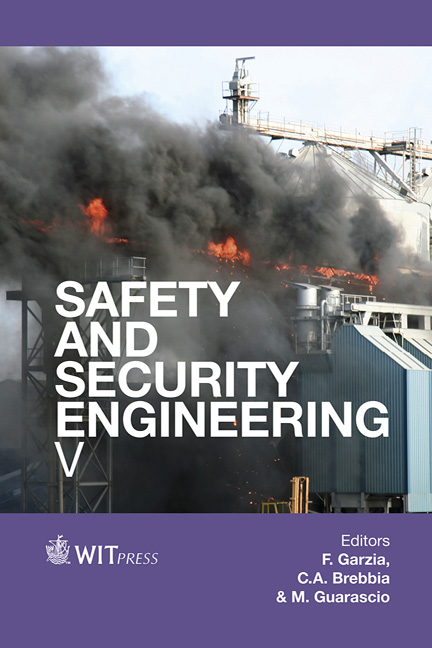Improved Solutions For Dangerous Liquid Containment
Price
Free (open access)
Transaction
Volume
134
Pages
9
Page Range
379 - 387
Published
2014
Size
805 kb
Paper DOI
10.2495/SAFE130341
Copyright
WIT Press
Author(s)
G. Janszen, A. M. Grande, P. Bettini & L. Di Landro
Abstract
The availability of new materials with uncommon characteristics and functionalities gives the opportunity to develop and possibly integrate new conceptual solutions for the improvement of safety in the design and manufacture of containers for critical substances. Numerous examples can be devised where a proper containment of liquid, even after tank damage, is essential with regard to safety issues. Bullet penetration or debris impact of fuel tanks are two relevant examples where specifically designed configuration and materials may significantly improve safety margins. In such situations, deflagration can be activated by sudden variation of internal pressure and temperature or liquid spilling due to wall container perforation. Cellular filler material in the container can remarkably dispel fire heat and limit pressure wave peaks generated by a bullet explosion; moreover, the overall response to impact loads in case of a crash is remarkably improved. Different fillers with particular configurations, ranging from porous structure to expanded aluminium foil, have been tested as tank explosion suppression media with remarkably positive results. In traditional multilayer wall fuel tanks, self-sealing capability can be obtained as a result of swelling or chemical reaction of rubber/foam layer when it comes in contact with the spilling internal liquid. A usual drawback of these materials is the limited resistance to aging which reduces their effectiveness with time. Moreover, the sealing material does not give structural contribution furthermore consistently increasing the weight of the component. Polymeric materials with intrinsic self-healing capability may become a valid alternative to traditional configurations. In this context, ethylene-methacrylic acid based ionomers can be adopted as self-healing layers.
Keywords
fuel tanks, fillers, self-healing, impact





